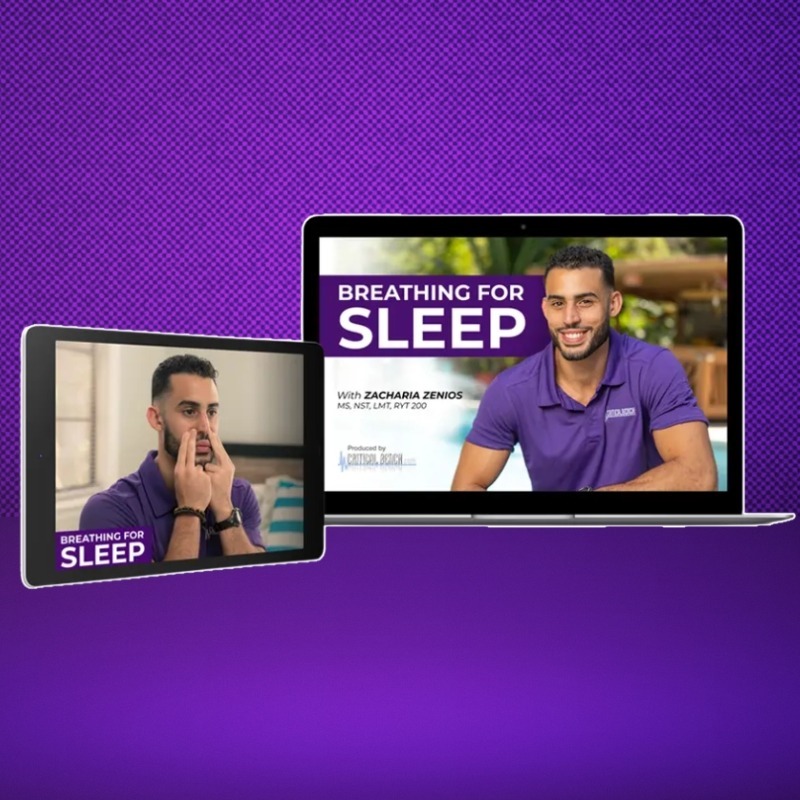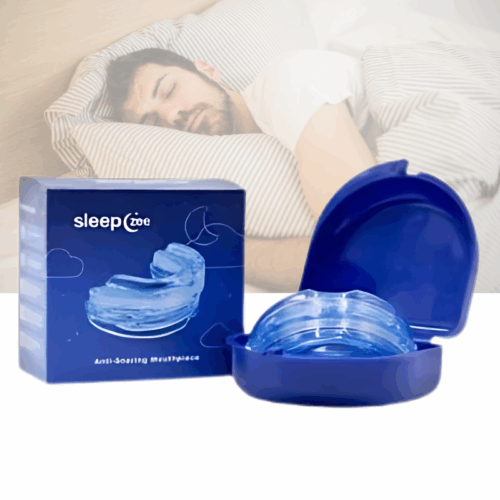$79.00
Transform your sleep with the Breathing For Sleep “Tongue Trick.” This innovative program employs simple, science-backed breathing techniques to activate the sleep nerve in your tongue, helping you fall asleep in just two minutes. Say goodbye to restless nights and hello to deep, restorative sleep! With easy-to-follow coaching videos and audio routines, this non-invasive, drug-free solution is perfect for anyone struggling with sleep issues. Enjoy a renewed sense of energy and well-being, and reclaim your nights today. Experience the power of breath and unlock the restful sleep you deserve!
Description
Sleep is an essential component of overall health, affecting everything from cognitive function to physical well-being. However, many individuals struggle with sleep disorders and difficulties in achieving restful sleep. One promising approach to improving sleep quality is through breathing techniques, specifically designed to enhance relaxation and improve sleep onset. This research paper explores the concept of “Breathing For Sleep,” examining various techniques, their physiological effects, and the potential benefits they offer.
Understanding Sleep and Its Importance
The Sleep Cycle
Sleep consists of several cycles, each comprising different stages, including REM (Rapid Eye Movement) and non-REM sleep. Each stage plays a vital role in physical restoration, memory consolidation, and emotional regulation. Disruptions in sleep can lead to a myriad of health issues, including anxiety, depression, obesity, and cardiovascular diseases.
Common Sleep Disorders
Sleep disorders, such as insomnia, sleep apnea, and restless leg syndrome, can significantly impact an individual's quality of life. Insomnia is characterized by difficulty falling or staying asleep, while sleep apnea involves repeated interruptions in breathing during sleep. Understanding these disorders is crucial for developing effective breathing techniques that can aid in improving sleep quality.
The Science Behind Breathing Techniques
Breathing techniques involve conscious control of breath to enhance relaxation and promote physiological changes in the body. These techniques can be categorized into various forms, including diaphragmatic breathing, box breathing, and the 4-7-8 technique.
Diaphragmatic Breathing
Diaphragmatic breathing, or abdominal breathing, involves engaging the diaphragm fully while inhaling, allowing for deeper breaths that enhance oxygen exchange. This technique helps activate the parasympathetic nervous system, promoting a state of calmness and reducing stress.
Box Breathing
Box breathing, also known as square breathing, consists of four equal parts: inhaling, holding, exhaling, and holding again. Each phase typically lasts for four counts, creating a “box” pattern. This technique is particularly effective in reducing anxiety and enhancing focus, making it a suitable practice before sleep.
The 4-7-8 Technique
The 4-7-8 breathing technique, popularized by Dr. Andrew Weil, involves inhaling for four counts, holding the breath for seven counts, and exhaling for eight counts. This method is designed to reduce anxiety and promote relaxation, making it a valuable tool for those struggling with sleep issues.
Benefits of Breathing Techniques for Sleep
Reducing Stress and Anxiety
Stress and anxiety are leading contributors to sleep disturbances. Breathing techniques can help mitigate these feelings by promoting relaxation and decreasing the production of stress hormones. By incorporating breathing exercises into a nightly routine, individuals may find it easier to unwind and prepare for sleep.
Enhancing Sleep Quality
Research indicates that practicing breathing techniques can lead to improved sleep quality. Participants in studies have reported falling asleep faster and experiencing deeper, more restorative sleep. This improvement is likely due to the physiological changes that accompany deep, controlled breathing.
Increasing Mindfulness
Breathing techniques encourage mindfulness, which can further enhance relaxation. By focusing on the breath, individuals can redirect their thoughts away from stressors and into the present moment. This mindfulness practice can create a more conducive environment for sleep.
Practical Application of Breathing Techniques
Incorporating Breathing Exercises into a Sleep Routine
To effectively integrate breathing techniques into a sleep routine, individuals can follow these steps:
- Choose a Comfortable Setting: Create a calming environment by dimming lights and minimizing noise.
- Practice Consistency: Engage in breathing exercises at the same time each night to develop a habit.
- Combine with Other Relaxation Techniques: Consider incorporating progressive muscle relaxation or meditation alongside breathing exercises for enhanced effects.
Guided Breathing Exercises
Many resources are available for individuals interested in guided breathing exercises. Apps, videos, and online platforms can provide step-by-step instructions and support for those new to these techniques.
Limitations and Considerations
While breathing techniques can be beneficial for many, they may not be a one-size-fits-all solution. Individuals with specific medical conditions or severe sleep disorders should consult healthcare professionals before attempting new practices. Additionally, it may take time and practice to see significant results from breathing techniques.
FAQs about Breathing For Sleep
- What is the purpose of breathing techniques for sleep?
Breathing techniques aim to reduce stress and anxiety, promote relaxation, and improve sleep quality. - How do breathing exercises work?
Breathing exercises activate the parasympathetic nervous system, helping to calm the body and mind, which can facilitate sleep. - How long should I practice breathing techniques before sleep?
Practicing for 5-10 minutes before bed can be effective. However, longer sessions may also be beneficial. - Can breathing techniques help with insomnia?
Yes, many individuals have found breathing techniques helpful in managing insomnia by promoting relaxation. - Are there any specific breathing techniques recommended for sleep?
Techniques such as diaphragmatic breathing, box breathing, and the 4-7-8 technique are all recommended for improving sleep quality. - Is there a best time to practice breathing exercises?
Practicing in the evening, before bed, is ideal, but techniques can be used at any time to reduce stress. - Do I need to be in a specific position while practicing breathing techniques?
It’s best to find a comfortable position, whether sitting or lying down, to facilitate deep breathing. - Can I combine breathing techniques with other relaxation methods?
Absolutely! Combining breathing exercises with meditation or progressive muscle relaxation can enhance their effectiveness. - How quickly can I expect to see results from breathing techniques?
Some individuals may notice immediate relaxation, while others may take several weeks of consistent practice to see significant improvements in sleep. - Are there any risks associated with breathing exercises?
Breathing techniques are generally safe for most people, but those with certain medical conditions should consult a healthcare professional first.
Conclusion
Breathing techniques offer a promising avenue for enhancing sleep quality and managing stress. By understanding the science behind these practices and incorporating them into a nightly routine, individuals may find relief from sleep disturbances and enjoy the myriad benefits of restorative rest. As research continues to evolve, the integration of breathing techniques into holistic health approaches may provide a valuable tool for improving overall well-being.




